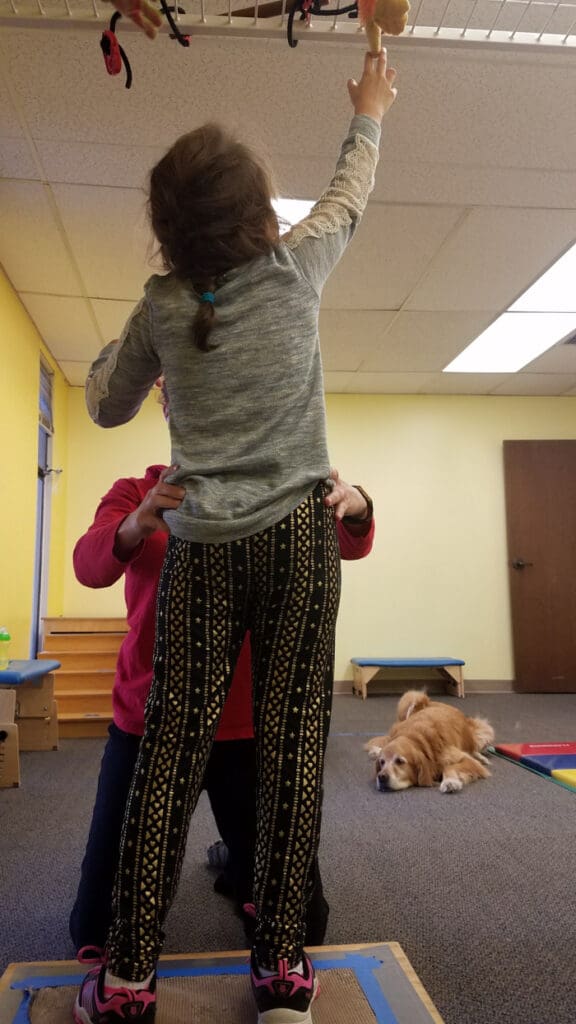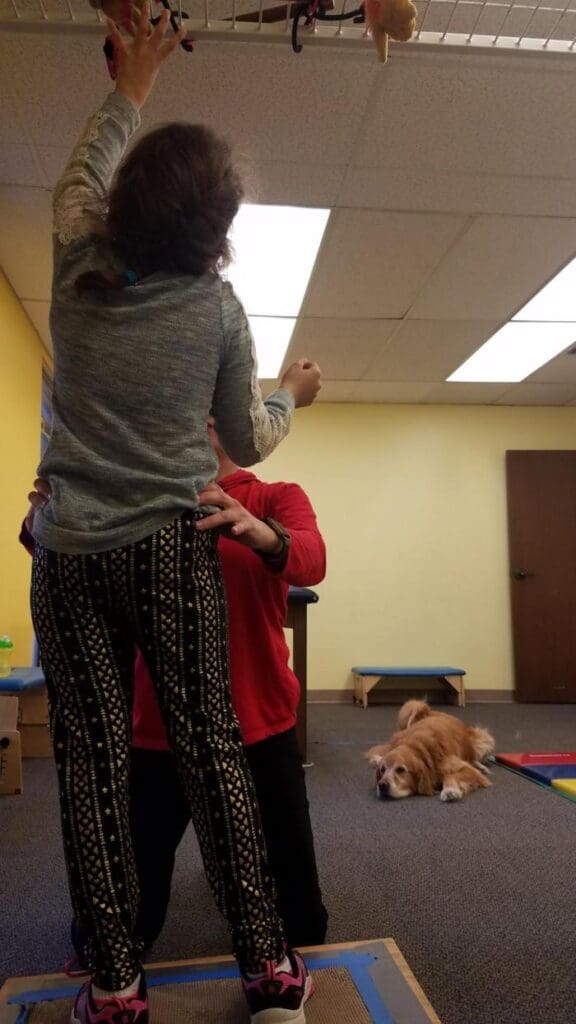We have been working on walking with some kids that are working on improving their weight shifting and all the mechanics that go with that. Many of them have hip weakness which we are addressing but we are also looking at other areas to address as well. With the hip weakness you can often see a trendelenberg pattern (when their hip drops on the leg they pick up to take a step with). One way kids counteract this is to lean their trunk towards the side that they are standing on when they pick up their other foot to take a step. This provides them some hip stability but it decreases their efficiency and increases their energy utilization because they now are actively moving their trunk side to side with every step. It also makes it harder to fix on a target when walking and can cause path deviation.
So, we decided to help them work on elongating their trunk while weight shifting onto the stance side. To do this, we used a balance board to simulate the weight shifting. As their hip strength and overall balance improves we can take the balance board away and have them shift into single leg stance but for now we decided to only add one new challenge to the task and let them keep both feet on a support surface. We placed a target above their right side and their left side that was just high enough for them to reach when they reached overhead.
Once we were set up, we asked them to shift over to one side and at the same time reach overhead to hit the target. This resulted in them lengthening their trunk on the side they were shifted to (as opposed to shortening their trunk because they were leaning to that side). Once they hit the target they shifted over to the other side and repeated the process over there. We did this in sets of 10. After that we did some overland walking with light tactile cues at their hips and verbal cues to reach overhead when they were on their stance leg.
Did it miraculously change their walking? No, but it started to introduce a new motor pattern that will require a lot of repetitions to become second nature, and it will require continued strengthening of the hips. But it is another component to helping with a more energy efficient walking pattern! Just remember, it takes lots and lots of repetitions to change a motor pattern – repeat, repeat, repeat…
What ideas have you tried?

